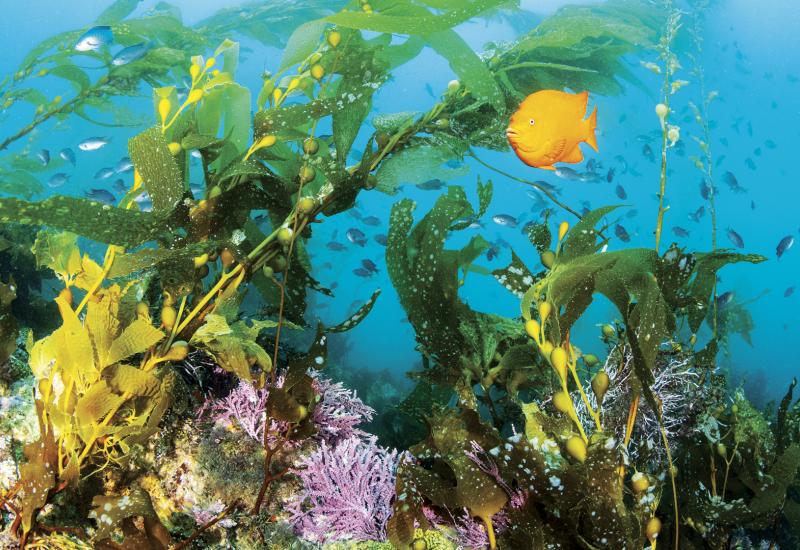What It's Like to Photograph a 40-Ton Humpback
It’s a miserable winter day out at sea, but my heart beats in anticipation as I look at the approaching fins. At last the skipper yells the three words I have been waiting to hear: “In the water!”
I slide into the ocean and see them — three massive shapes in the distance, gliding majestically toward me: a mother, her calf and their escort.
Every year between July and October, the humpbacks gather near the islands of Tonga after traveling from their Antarctic feeding grounds.
Humpback whales — Megaptera novaeangliae — are among the biggest animals on Earth, measuring between 39 and 52 feet in length. They are easily recognized by their knobby head, humped dorsal fin and long pectoral fins, which can reach up to one-third their body length, and are the longest appendages in the animal kingdom.
Although whale watching is possible worldwide, it’s legal to swim with them only in select locations. Tonga, a South Pacific breeding ground for humpbacks, is one of those places.
One unforgettable encounter is with a calf we nickname BamBam. He is the most curious calf I have ever met and is determined to play with us. Once he sees us, he leaves his mother, charges toward us and starts rolling around. This is no ordinary baby: Measuring about 13 feet and weighing about 1 ton at birth — and now growing fast — a humpback calf can be intimidating.
Another magic moment is with two courting whales. They glide in the water, rolling and touching each other softly, ascending vertically, and pirouetting around each other, as if performing a synchronized underwater ballet.

Humpback Whale and Calf
A humpback whale and calf swim close to the surface in the islands of Tonga.
Vanessa Mignon
During that encounter, I end up sandwiched between two fully grown adult whales, the equivalent of two city buses. I can’t describe how overwhelming it is to look into the eye of a whale and feel that it is looking back at you.
The Tonga Whale Guide Training Program (TWGTP) was developed by a team of experts and taught for the first time in Vava’u in April 2012. This course covers various humpback-whale biology, migration patterns and behaviors, as well as how to manage visitors and their interactions with the whales. The objective is to eventually make this training and certification compulsory in order to operate a whale tour.
Read more: Tonga Liveaboards | Kona: Where the Whales Are | Whales in the Dominican Republic
To see more of Vanessa's photography and find out about her wildlife tours, visit her website here.
It’s a miserable winter day out at sea, but my heart beats in anticipation as I look at the approaching fins. At last the skipper yells the three words I have been waiting to hear: “In the water!”
I slide into the ocean and see them — three massive shapes in the distance, gliding majestically toward me: a mother, her calf and their escort.
Every year between July and October, the humpbacks gather near the islands of Tonga after traveling from their Antarctic feeding grounds.
Humpback whales — Megaptera novaeangliae — are among the biggest animals on Earth, measuring between 39 and 52 feet in length. They are easily recognized by their knobby head, humped dorsal fin and long pectoral fins, which can reach up to one-third their body length, and are the longest appendages in the animal kingdom.
Although whale watching is possible worldwide, it’s legal to swim with them only in select locations. Tonga, a South Pacific breeding ground for humpbacks, is one of those places.
One unforgettable encounter is with a calf we nickname BamBam. He is the most curious calf I have ever met and is determined to play with us. Once he sees us, he leaves his mother, charges toward us and starts rolling around. This is no ordinary baby: Measuring about 13 feet and weighing about 1 ton at birth — and now growing fast — a humpback calf can be intimidating.
Another magic moment is with two courting whales. They glide in the water, rolling and touching each other softly, ascending vertically, and pirouetting around each other, as if performing a synchronized underwater ballet.

Vanessa MignonA humpback whale and calf swim close to the surface in the islands of Tonga.
During that encounter, I end up sandwiched between two fully grown adult whales, the equivalent of two city buses. I can’t describe how overwhelming it is to look into the eye of a whale and feel that it is looking back at you.
The Tonga Whale Guide Training Program (TWGTP) was developed by a team of experts and taught for the first time in Vava’u in April 2012. This course covers various humpback-whale biology, migration patterns and behaviors, as well as how to manage visitors and their interactions with the whales. The objective is to eventually make this training and certification compulsory in order to operate a whale tour.
Read more: Tonga Liveaboards | Kona: Where the Whales Are | Whales in the Dominican Republic
To see more of Vanessa's photography and find out about her wildlife tours, visit her website here.










